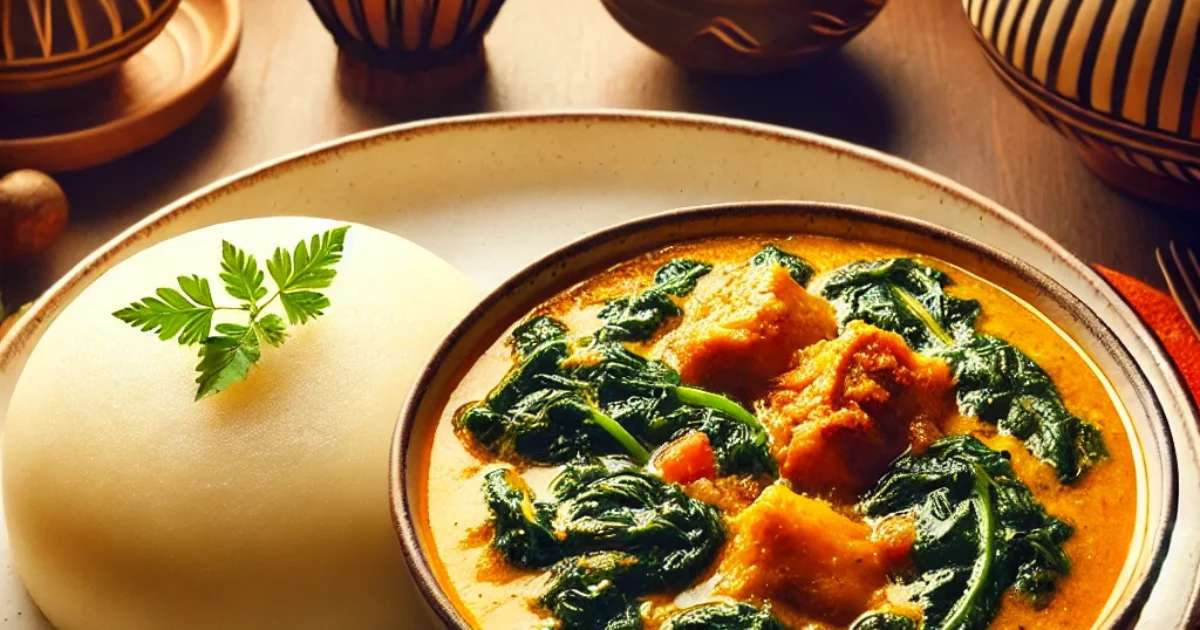risingtideproject.org – Fufu, a starchy, dough-like food made from pounded starchy root vegetables or plantains, is a staple across West and Central Africa. It’s rarely eaten on its own; instead, it’s almost always paired with a flavorful soup or stew, creating a complete and satisfying meal. This article delves into the world of fufu and soup, exploring the different types of fufu, the diverse soups they accompany, and the cultural significance of this iconic West African pairing.
The Foundation: Varieties of Fufu
Fufu’s base ingredient varies regionally, leading to different textures and subtle flavor nuances. The most common types of fufu include:
- Cassava Fufu: Made from fermented cassava (yuca) that is pounded into a smooth, elastic dough. This is one of the most prevalent forms of fufu, particularly in Nigeria and other parts of West Africa.
- Yam Fufu (Pounded Yam or Iyan): Made from boiled yams that are pounded until they form a smooth, stretchy dough. This type of fufu is particularly popular in Nigeria and Ghana.
- Plantain Fufu: Made from ripe or unripe plantains that are boiled and pounded. This type of fufu can have a slightly sweeter taste depending on the ripeness of the plantains.
- Cocoyam Fufu: Made from cocoyams (taro root) that are boiled and pounded. This type of fufu has a slightly stickier texture.
- Semolina/Cornmeal Fufu: In some regions, fufu is made from semolina or cornmeal cooked into a thick porridge and then stirred vigorously until it develops a smooth, dough-like consistency. This is a quicker alternative to the traditional pounding methods.
The Perfect Partner: A World of Soups
The true magic of fufu lies in its pairing with a wide variety of flavorful soups. These soups are often rich in protein, vegetables, and spices, creating a balanced and nutritious meal. Some popular soup pairings include:
- Groundnut (Peanut) Soup: A rich and creamy soup made with ground peanuts, vegetables (like tomatoes, onions, and peppers), and often meat or fish. This soup has a nutty flavor and a thick consistency, making it a perfect complement to fufu.
- Palm Nut Soup (Banga Soup): Made from palm fruit pulp, this soup has a distinctive reddish-orange color and a rich, earthy flavor. It often contains meat, fish, or seafood and is seasoned with spices like pepper, onions, and sometimes scent leaves.
- Light Soup: A lighter, broth-based soup made with tomatoes, peppers, onions, and spices. It can contain meat, fish, or chicken and is often served with fufu for a less heavy meal.
- Egusi Soup: Made with ground melon seeds, leafy greens, and often meat or fish. This soup has a unique texture and a nutty flavor that pairs well with fufu.
- Okra Soup: Made with okra, tomatoes, onions, peppers, and spices. This soup has a slightly slimy texture, which some people find appealing, and is a good source of fiber.
- Pepper Soup: A spicy, broth-based soup made with a variety of peppers, spices, and often meat, fish, or chicken. This soup is known for its intense heat and is often enjoyed as a remedy for colds or flu.
Preparing Fufu: Traditional Pounding and Modern Methods
Traditionally, fufu is made by pounding boiled root vegetables or plantains in a large mortar with a pestle. This is a labor-intensive process that requires skill and strength. The pounding continues until the ingredients form a smooth, elastic dough.
Today, modern appliances like food processors and blenders are often used to simplify the process. While these methods are quicker, some argue that they don’t produce the same texture as traditional pounding.
Eating Fufu and Soup: A Communal Experience
Fufu is typically eaten by hand. A small portion of fufu is pinched off, rolled into a ball, and then dipped into the soup. The fufu is then swallowed without chewing, allowing the flavors of the soup to be fully appreciated.
In many West African cultures, eating fufu and soup is a communal experience, often shared from a central bowl. This fosters a sense of togetherness and strengthens social bonds.
Nutritional Value: A Balanced Meal
Fufu and soup can provide a balanced and nutritious meal, depending on the ingredients used.
- Carbohydrates: Fufu provides carbohydrates, which are the body’s primary source of energy.
- Protein: The meat, fish, or other protein sources in the soup provide essential amino acids.
- Vitamins and Minerals: The vegetables and other ingredients in the soup contribute vitamins and minerals.
- Fiber: The vegetables and some types of fufu (like plantain fufu) provide fiber, which aids digestion.
Cultural Significance: More Than Just Food
Fufu and soup are more than just a meal; they are a cultural symbol in West Africa. They are often served at social gatherings, ceremonies, and celebrations, playing an important role in social and cultural life. The preparation and sharing of fufu and soup are often passed down through generations, preserving cultural traditions and family recipes.
Conclusion: A Culinary Treasure
Fufu and soup represent a culinary treasure of West Africa, showcasing the region’s rich culinary heritage and diverse flavors. The combination of the starchy fufu and the flavorful soup creates a satisfying and nutritious meal that is enjoyed by millions. From the traditional pounding methods to the modern adaptations, fufu and soup continue to be a beloved staple, bringing people together and embodying the spirit of West African cuisine.
